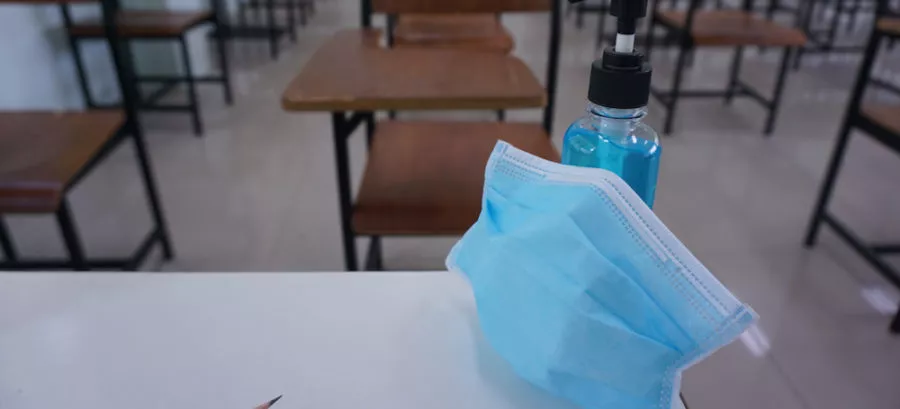The early shutdown of schools and the many challenges of re-opening are presenting an opportunity for educators, administrators, and other education stakeholders to come together and co-create the best solutions for the nation’s students in this unprecedented moment. This push toward collaboration is promoted by the National Labor-Management Partnership, a group representing school personnel, state, district and school administrators, and elected school board members.
The coalition of these key organizations has developed a model for reopening that emphasizes that cooperation by school leaders, teachers, parents and community members is critically needed to tackle the pandemic’s thorny challenges – the logistical difficulties in addressing ongoing public health concerns while meeting students’ academic, social, and emotional needs – officials with the five groups say.
“Our nation’s students deserve a well-designed, thoughtful plan for reopening school buildings. Our families are counting on all of us – administrators, educators, and community members – and we must work together to keep them safe,” says NEA President Lily Eskelsen García. She notes that a collaborative framework developed two years ago by the group can be a useful tool for today’s challenges, incorporating the best ideas from all stakeholders.
The model for reopening school buildings is based on a collaborative framework that grew from a call to action by the National Labor-Management Partnership, which originally included the National Education Association, the American Federation of Teachers, AASA - The School Superintendents' Association, and the National School Boards Association. It now also includes the Council of Chief State School Officers, the National Association of Elementary School Principals and the National Association of Secondary School Principals.
The new “Collaborating in a Crisis” document offers guidelines about re-opening schools and making key decisions in the same collaborative spirit.
“Collaborating in a Crisis” spells out a structure for a COVID-19 task force informed by five working groups for public health and safety, school operations and logistics, teaching and learning, equity and family needs, and social and emotional health. In addition to offering suggestions for collaborative structures, it also presents key questions for those working groups to consider in their collaborative planning.
“Only by creating opportunities for authentic educator voice in today's difficult decisions will we be able to create an education system that heals the trauma of this time and ignites the potential in every child,” Garcia says. “We participate in the NLMP because we know that there are district superintendents and school boards that genuinely want decisions to be informed by educators' knowledge and expertise.”
Daniel Domenech, executive director of AASA, The School Superintendents Association, agrees, noting that collaboration by teachers, administrators and board members is the only way reopening efforts will be accomplished in an effective and healthy manner.
“Opening schools post-COVID is about so much more than just opening doors,” he says.
The group’s plan shows how the collaborative partnership framework, established in 2018 by the NLMP, can be plugged into key problems even as challenging as the response to COVID-19.
“The guide is offered to spark ideas and actions as well as to facilitate dialogue in community so that they can elevate opportunities for greater collaboration and transparency,” says Anna Maria Chávez, executive director and chief executive officer for the National School Boards Association.
She said schools have “managed a herculean task” to serve students during the pandemic and now, with the new school year approaching, public education leaders need to the input of all those involved to prepare their buildings and develop plans for the year so that students are safe.
The guide notes that because of “the inevitable stress on state budgets based on economic fallout from the COVID-19 crisis, it is imperative that federal and state governments
take action to ensure that school systems have the resources required to meet students’ needs in the months to come”.
It reminds school leaders that there will be local concerns too: “While parents are very supportive of educators and public schools right now, if school systems do not use this summer to put a comprehensive plan in place for the coming year – one that thoughtfully balances educational goals with families’ health, economic, and social realities – we are likely to see a limit to the public’s goodwill.”
It also notes that schools must be ready to respond to unique circumstances such as closing the school if cases of COVID-19 rise or allowing for social distancing or additional remote learning options.
Equity in schools and the needs of families are the focus for one of the working groups and Randi Weingarten, president of the American Federation of Teachers sees that as a priority. “COVID-19 has upended our lives in so many ways, further exposing the inequities in our society and completely rearranging schooling for students, families, educators, administrators and parents alike,” she says, noting that developing solutions for these challenges requires that collaboration be central.
“This is all uncharted territory, and doing this work well requires us to collaborate like never before. Together, we can make a plan for schools to work in our new reality.”
The National Labor-Management Partnership offers a timely and realistic model for ensuring stakeholder collaboration in district decision-making during this important time. It serves as a companion to NEA’s guidance on the key principles that districts should adhere to in the school reopening decisions found here. More NEA resources on collaborating during the pandemic and its aftermath are available here.


